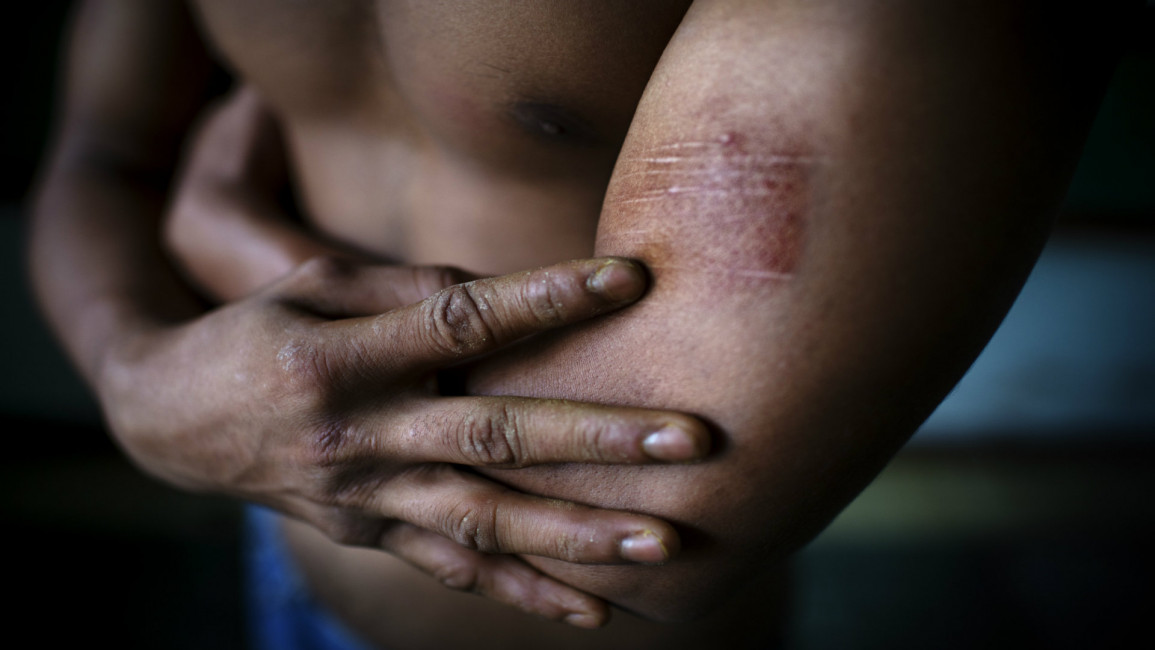Horror and humiliation inside CIA dungeons
The full horror and extent of US torture in the "war on terror" has been brought into stark relief with the publishing of a long-awaited Senate report into the CIA's use of "enhanced interrogation techniques".
The most damning findings of the report will remain classified and beyond public scrutiny. These are some of the most shocking details released to the public.
Forced rectal feeding
At least five prisoners had "forced rectal feeding" or "rectal rehydration" without any documented medical need. An officer confirmed that although IV rehydration by a drip was safe and effective, rectal rehydration could be used as a form of behaviour control.
Rectal exams were conducted with "excessive force" and the report illustrates one prisoner later diagnosed with "anal fissures, chronic haemorrhoids and symptomatic rectal prolapse".
The CIA's chief of interrogations said the torture brought "total control" over the victim. Another source in the report said it "helped to clear a person's head".
Mock executions and threats to family
Mock executions and Russian roulette were used during interrogations. Agents threatened to harm captives' children, sexually abuse their mothers and on at least one occasion "cut a detainee's mother's throat". Several prisoners were led to believe they would die in captivity because, according to one interrogator, "we can never let the world know what we did to you".
Standing on broken limbs
In early 2003, two captives with broken feet were subjected shackled in standing positions and subjected to "walling, stress positions and cramped confinement". The CIA did this despite having agreed previously to not subject wounded prisoners to procedures that might exacerbate their injuries.
Sleep deprivation and non-stop interrogation
Captives were kept awake for up to 180 hours, usually standing or in stress positions, and at times with hands shackled above their heads.
One interrogator said a captive "could go for days or weeks without anyone looking at him", and that his team found one captive who had been chained to a wall in a standing position for 17 days.
| Captives were kept awake for up to 180 hours, usually standing or in stress positions. |
Khalid Sheikh Mohammed, who the US says was the mastermind of the 9/11 attacks, was one of those exposed to sleep depravation. He was forced to say awake for seven-and-a-half days, most of the time in a standing position.
Shackling and freezing
A man named Gul Rahman died after a CIA operative in Afghanistan ordered him to be shackled almost naked to the wall of his cell in a position requiring him to "rest on the bare concrete floor". The next day he was found dead and the internal CIA post-mortem examination found he had likely died of hypothermia, "in part from having been forced to sit on the bare concrete floor without pants".
Simulated drowning
The CIA said that "waterboarding" had only ever been used on three captives but the committee's findings suggest otherwise. The report describes a photograph of a "well worn" waterboard, surrounded by buckets of water, at a black site where the intelligence agency claimed it never used the procedure. No explanation was given for the photograph.
Khaled Sheikh Mohammed was waterboarded at least 183 times, which the committee described as a "series of near drownings".
Another captive, Abu Zubaydah, was described as a "broken man" and "hysterical" after being subjected to to extensive waterboarding. He was "distressed to the level that he was unable effectively to communicate".
Waterboarding sessions resulted in immediate fluid intake, chest and arm spasms, and hysterical pleas. In at least one session he lost consciousness and only became responsive again after medical intervention before expelling "copious amounts of liquid".
And for what?
The report found in most cases that the CIA deployed the harshest techniques before trying to first garner information in and "open, non-threatening manner".
Perhaps the most damning conclusion is that the CIA's claim that their techniques elicited information that couldn't have been obtained through other means was debunked. The CIA itself acknowledged it never even properly reviewed the effectiveness of the techniques.



